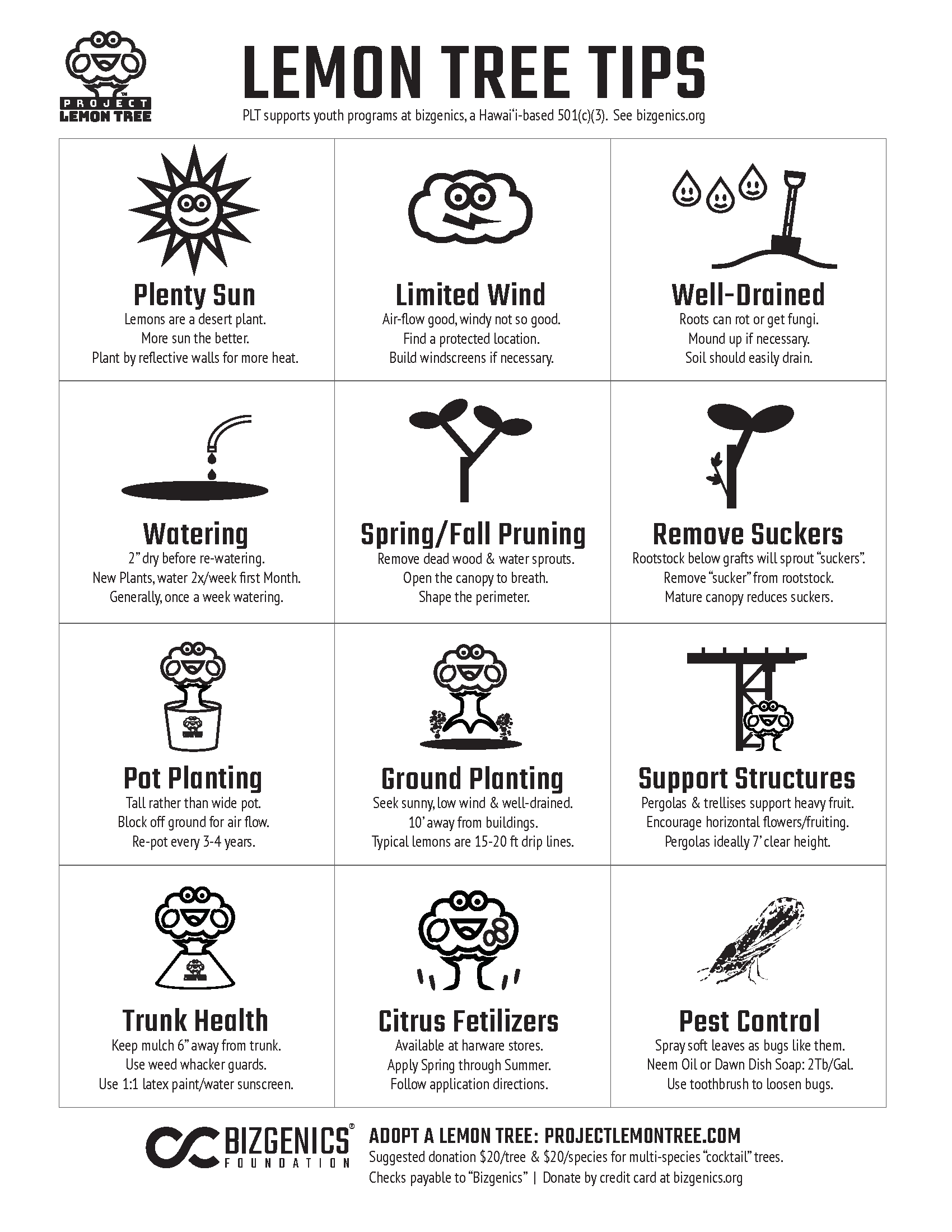Planting, Feeding, Pruning & More
How to Keep Your Citrus Trees Happy & Healthy
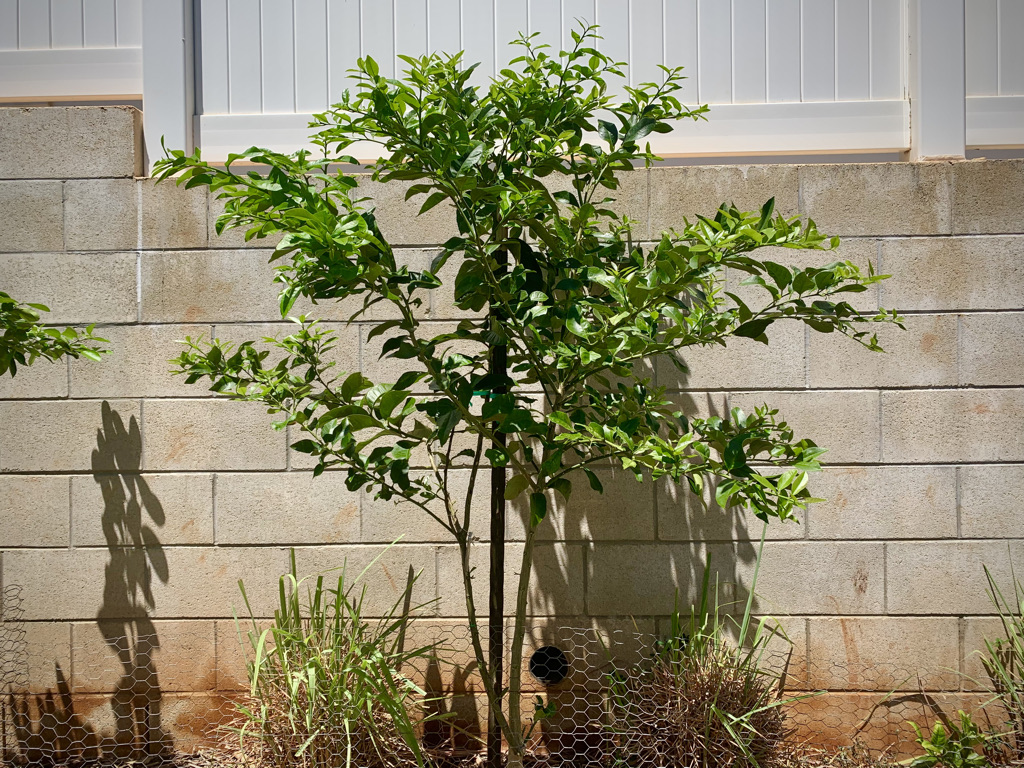
Plenty Sun
Pick a sunny location for your lemon tree. The more heat the better. For example, close to a wall or fence that reflects heat back onto the plant is a good idea. Lemons are a desert plant that love the heat.
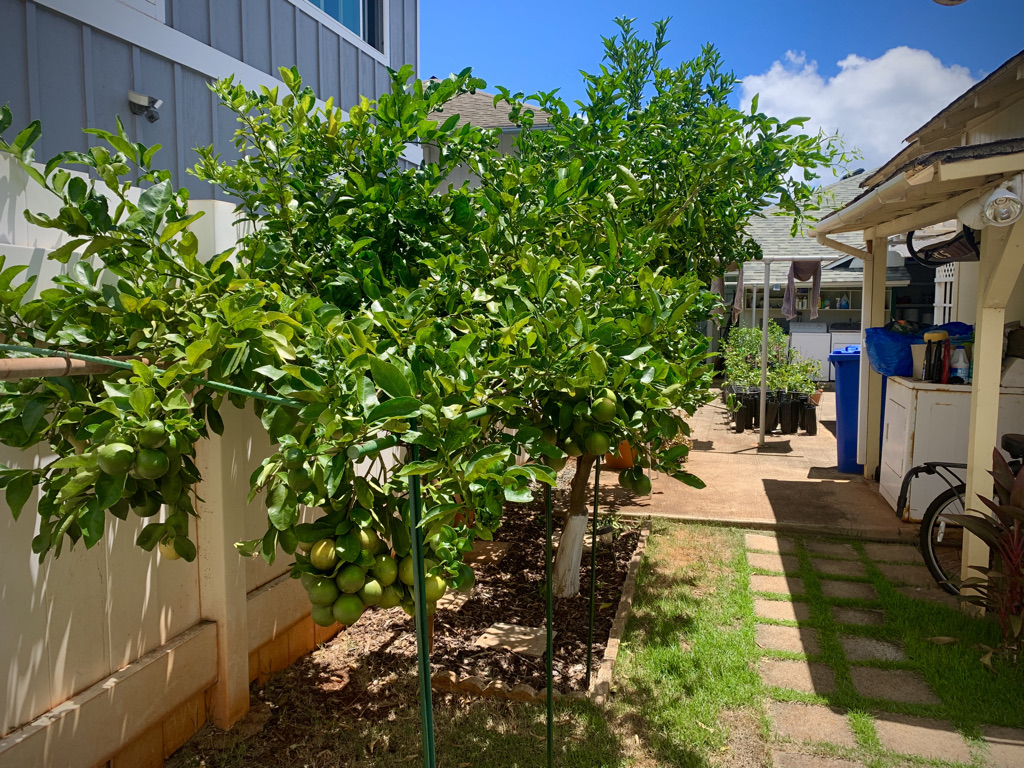
Limited Wind
Lemon trees don’t like heavy wind, so try and find a protected location. You can buld windbreaks out of screen cloth or anything that stops part of the wind.
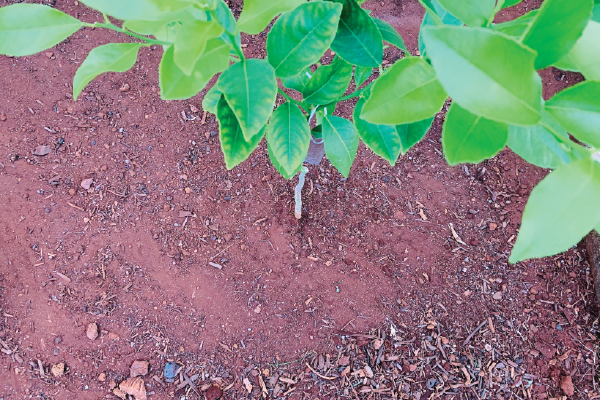
Well-Draining Soil
Lemon trees have roots that are susceptible to fungi and rot. That’s why it’s important to have well-drained soil. It’s also why fruit trees are grafted. Sandy loam is recommended. This can be made up of 50% organic material like compost, 25% Perlite and 25% sand.

Watering Regime
Lemons are very drought tolerant, so take care to let dirt dry out between waterings. They like well-drained soils as they are poorly drained soils and overwatering invite root disease.
FIRST WATERING FOR NEW PLANTS: Water a couple of times a week for the first month, then cut back to around once a week. The top two inches of soil should be dry before re-watering.
Symptoms of overwatering lemon trees include: Yellowing or brown leaves: Leaf drop after turning yellow or brown, leaves will drop, and; Fruit splitting open. Over-watering can cause many problems for your citrus tree such as reduced oxygen levels, iron chlorosis and root or foot rot. Root rot is a fungal disease that occurs below the soil line on your tree’s trunk. It can progress along the root structure and kill your tree if not contained quickly.
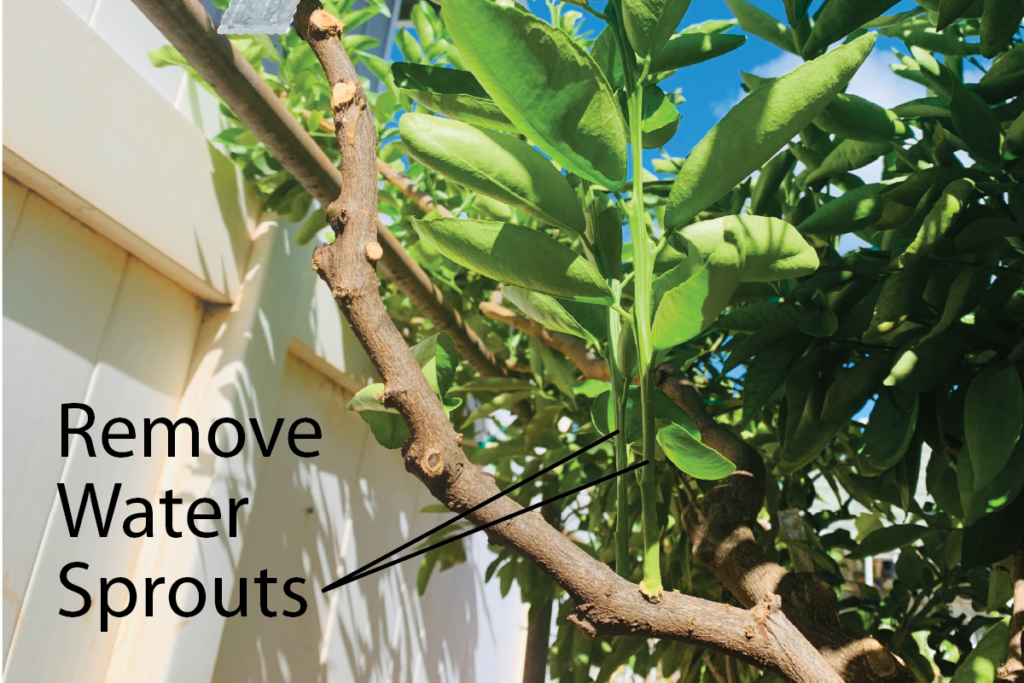
Spring & Fall Pruning
It’s important to prune at the right time of year, to optimize yield and reduce insect infestations, particularly citrus leafminers.
Pruning stimulates leaf flush, so you can expect new growth in the moth following pruning. Since citrus leafminers are most active mid-summer to fall, pruning early allows leaves to mature and harden well in advance of summer to provide protection against leafminers. Thus February through April are the best pruning months.
You also can prune after the last harvest (typically fall or winter) to give your tree plenty of time to recover prior to the next season’s harvest. If you live in a warm climate, you have a bit more leeway on exactly when to prune as the tree will be active all year.
Pruning Tips
- Remove all damaged/dead wood and fruit as they can attract pests, mold and fungus.
- Remove “water sprouts” – fast vertical growth limbs that shoot straight up from large branches or the trunk – cut these off as they produce new leaves for a long time that will attract leafminers. Further, vertical growth produces far less fruit than horizontal limbs (typically 60% less).
- Open the Canopy to allow air to easily flow through by remove crossing limbs and water sprouts to allow the canopy to breath.
- Shape the perimeter as needed.
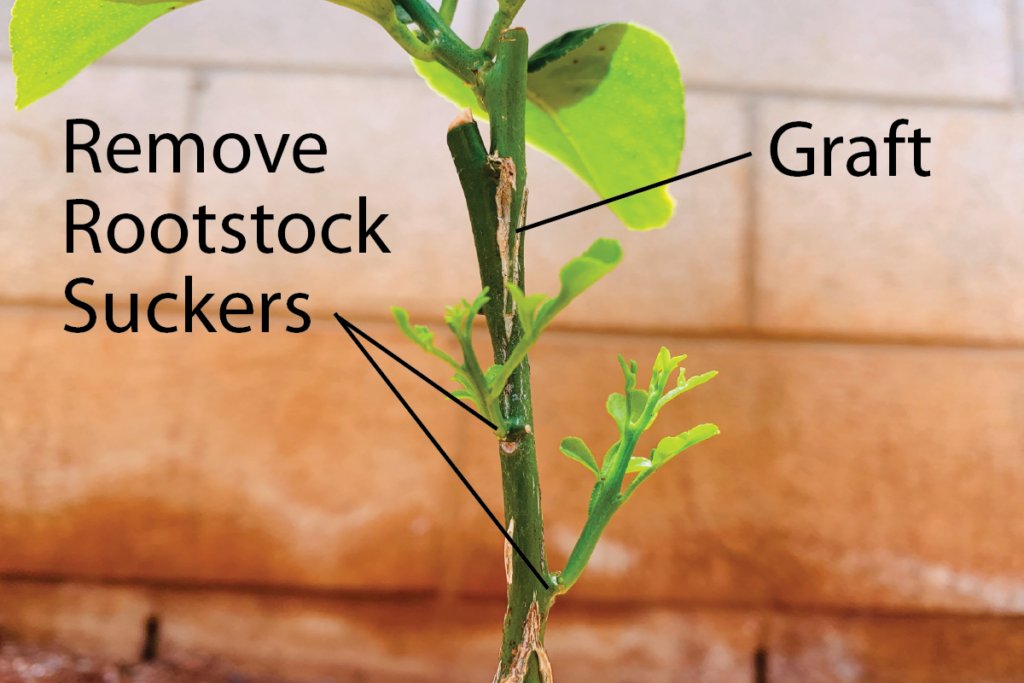
All-year Remove Suckers
All lemon trees are “grafted” which means that a piece of a preferred fruit tree (a stem or bud) is added onto an established plant stalk (the rootstock), which supports and nourishes it. You should be familiar with the graft area of your tree, and not allow growth below the graft area, as rootstock suckers may eventually grow to take over and kill your preferred fruit branches. Any growth below the graft needs to be removed.
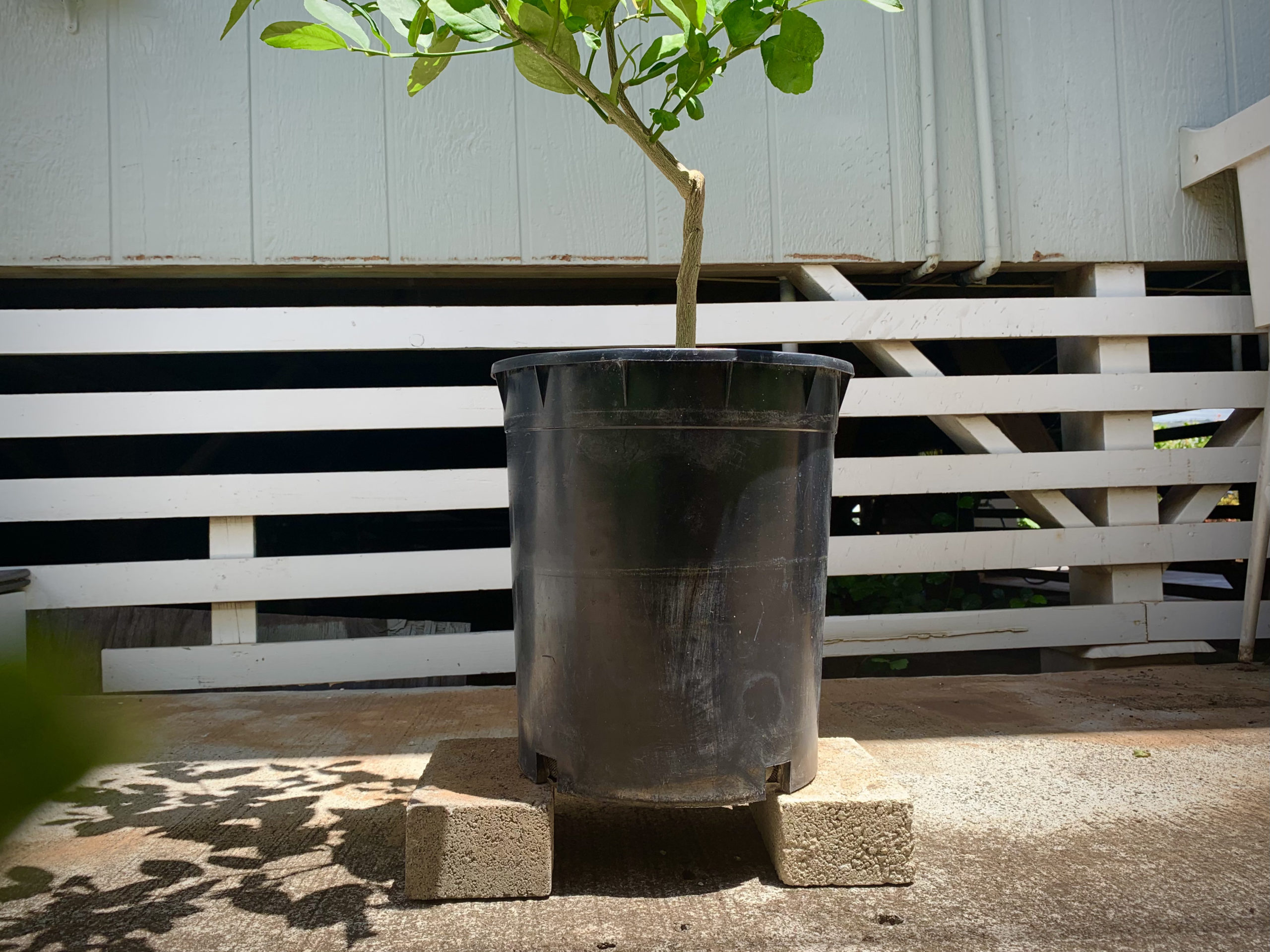
Pot Planting
When pot planting, choose a pot that’s taller rather than wider as lemons have deep tap roots. The structure of lemon tree roots in deep rather than wide so they tend to not be invasive or prone to break sidewalks. Lemon trees also have a 1:2 root to canopy ratio which is a-typical for most trees, hence whatever size pot you grown in will govern the maximum size of the tree. Lemon trees do very well in pots and you may expect good fruit production for lemon trees even in pots.
A key to good pot growing is propping up your pot with bricks or gravel to separate it from the ground or patio below. This allows for air flow to reduce the risk of fungi, allows for complete draining of water and guards against roots being burned by hot patios.
Repotting is recommended every 3-4 years as trees can get root-bound and soil can get depleted.
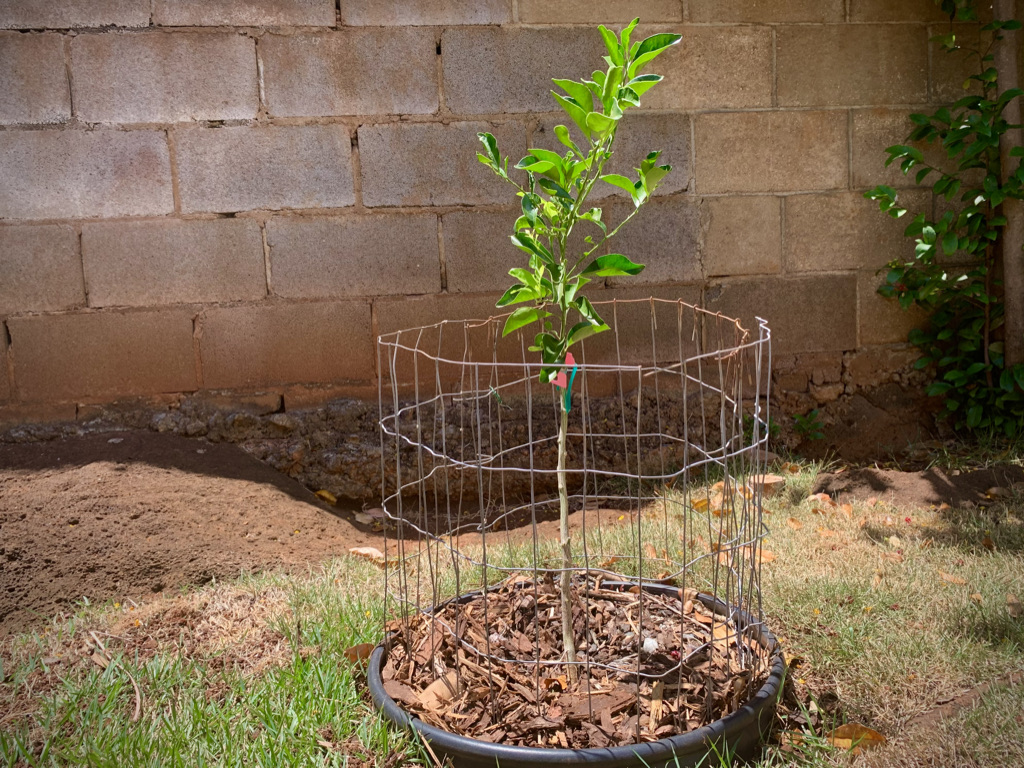
Ground Planting
When ground planting, location counts. Good sun, limited wind and well-drained locations are important. Avoid planting where water pools or doesn’t drain from the soil. In such locations, you may consider mounding up and planting in the mound as water will run out of it.
Try to keep 10 feet away from buildings. Trees can be closer if you prune regularly. Roots are not invasive.
If multiple trees, 20′ on center is what agriculture does as trees are typically 15-20′ drip lines.
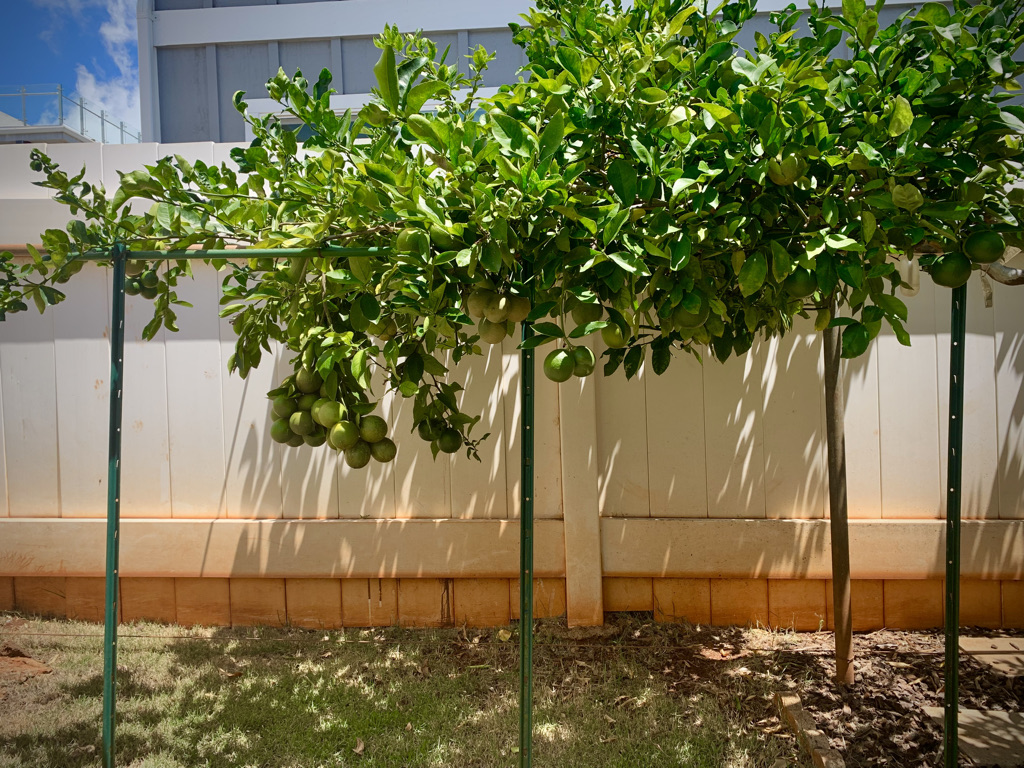
Support Structures
Lemons can get very heavy, so support structures may be needed to keep your branches from breaking. Pergolas (overhead structures) and trellises (vertical structures) are helpful. Note that horizontal, rather than vertical growth on lemon trees produced 60% more fruit as trees elect to put energy into flowers and fruit on horizontal branches while vertical branches prioritize on producing leaves instead for photosynthesis production (turn sunlight into energy).
Pergolas can be really simple or really fancy. For walk-under pergolas, we recommend a height of 7′ clear to the bottom of any beam so that people can walk under, yet be able to pick fruit from the ground without having to get up on a ladder.
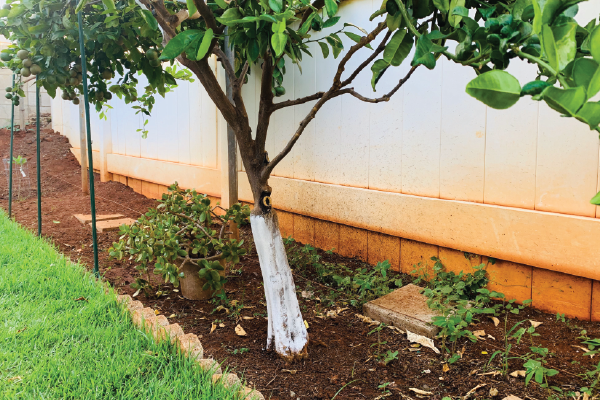
Keep Trunks Healthy
Lemon tree trunks and roots are sensitive to rot and fungi. Thus it’s important to keep the trunk exposed to light and air. Keep mulch 6-12″ sway from trunk.
Place weed whacker guards if you weed whack around trees. Nicked trunks are susceptible to fungi and insect infestations.
Lemon trees are also subject to sunburn, particularly in desert or tropical environments because they have very thin bark, which can dry out in the heat. This causes stress to the tree and can even be fatal.
Painting citrus bark is easy. Special tree paint is available, but any flat, white, latex paint will work. Do not use enamel or oil-based paints as they will harm the tree. Dilute latex paint at a 1:1 ratio with water and apply it over all the exposed bark. Make sure to paint all the way to the base, but don’t worry about painting up into the canopy where the bark is green—it will have enough shade from the leaves. If the paint looks translucent after the first coat, apply another to provide sufficient protection.
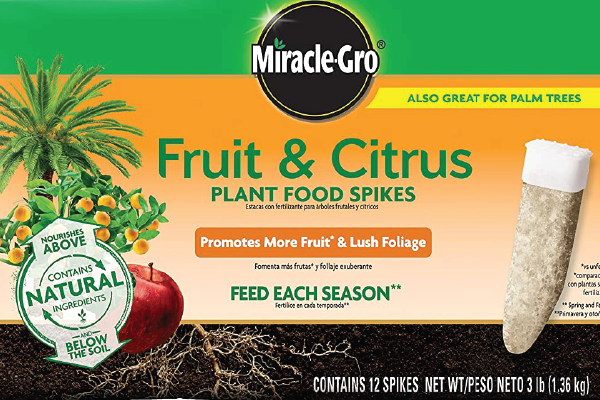
Citrus Fertilizers
The three main nutrients a lemon tree needs are nitrogen, phosphorous and potassium — the NPK on the fertilizer’s label. Nitrogen helps develop healthy foliage, phosphorous assists in building a strong root system, builds defenses against disease and helps boost yield.
As a rule of thumb, use citrus fertilizers during active growth. For lemon trees this means spring through summer. Cease fertilization at the end of summer, or after your tree’s natural production begins to slow. Do not fertilize your lemon tree during the winter months so it has a chance to regenerate in dormant phase.
Alternatively, slow release fertilizer spikes can be used to fertilize your lemon tree once a year, in early spring.
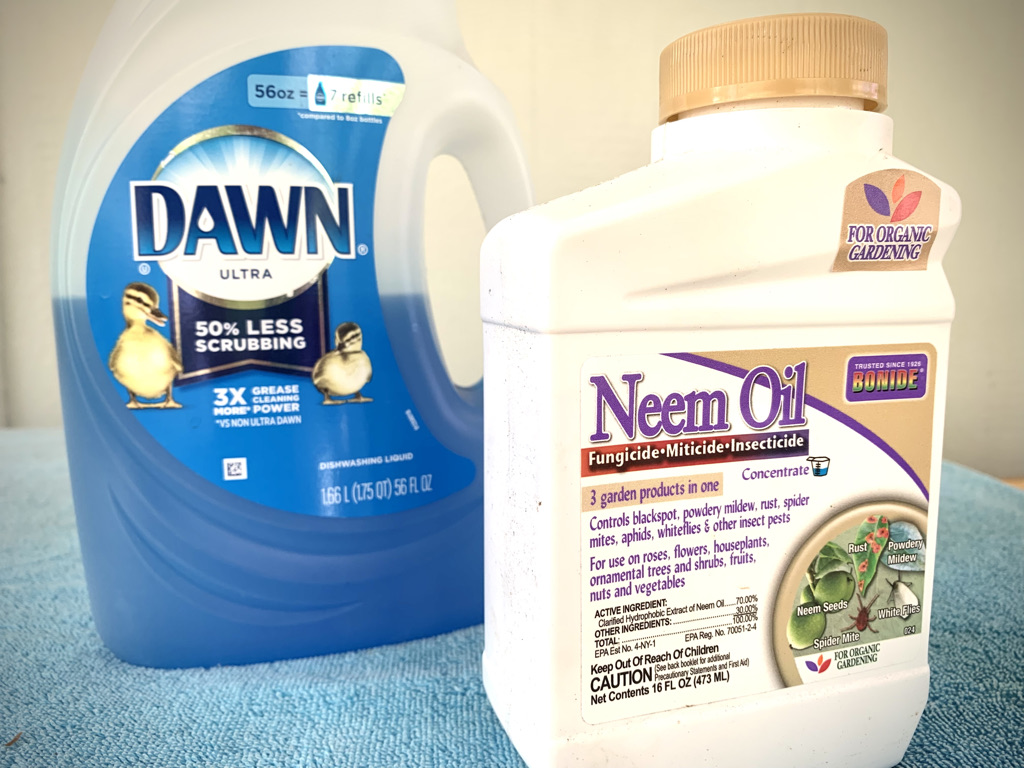
Organic Pest Control
Bugs like aphids, scale, white flies, mealy bugs and leafminer love to hit lemon tree leaves when they’re young. When leaves have hardened, there’s far less chance of bug infestations. You should aso be on the lookout for ants that harvest sap from bugs.
A good practice is to spray new leaves before bugs appear. Dawn Dish Soap (the only brand that works due to a patented sudsing ingredient) and Neem Oil are two good organic options. Mix 2 tablespoons of Dawn or Neem per gallon of water. Spray once a week when leaves are young (about a month).
If bugs appear, spray and use a toothbrush to dislodge bugs, especially scale which hard to kill.
Lemon Tree Tips Sheet
Get our tips sheet here: Download 315K PDF »

